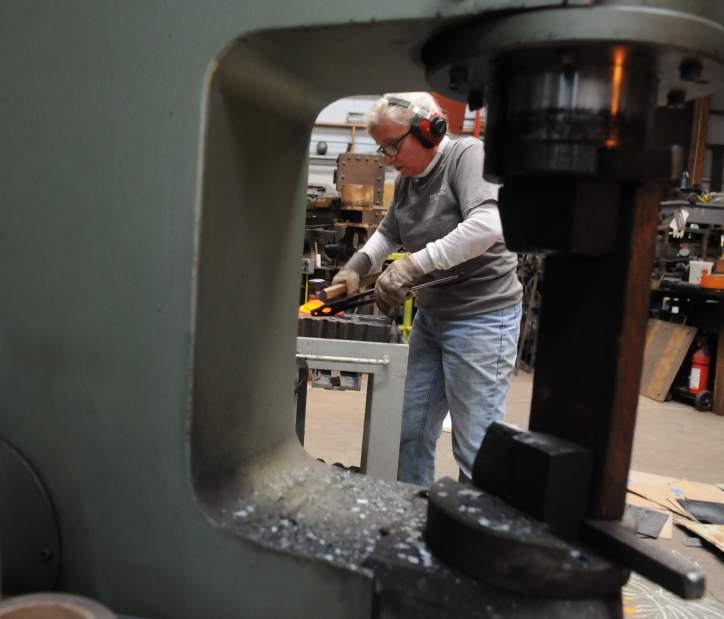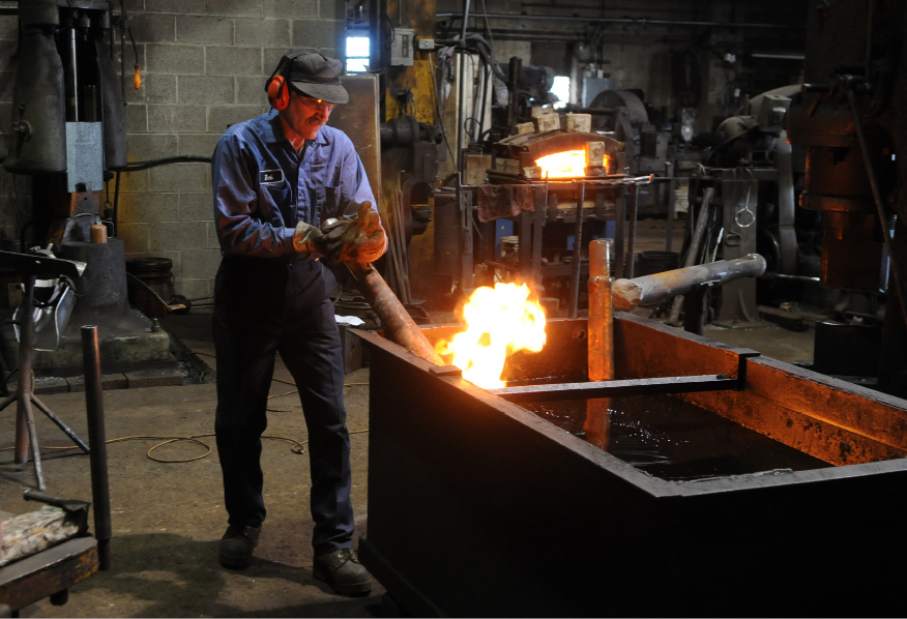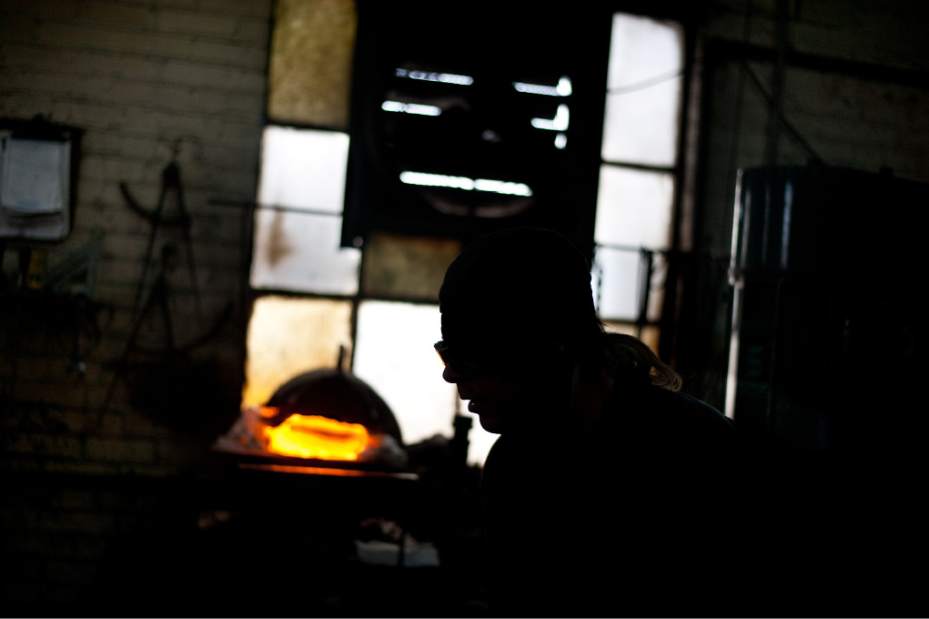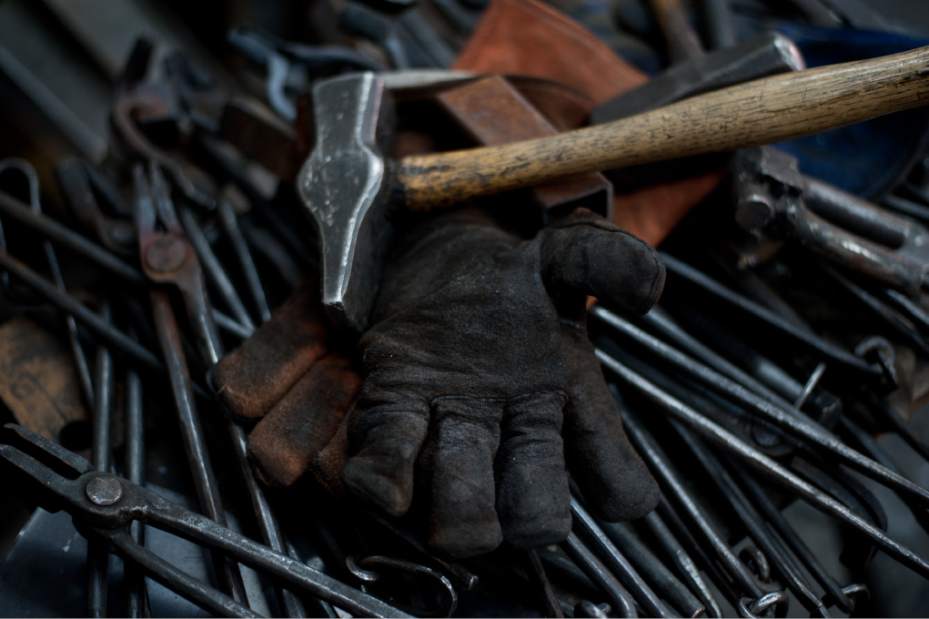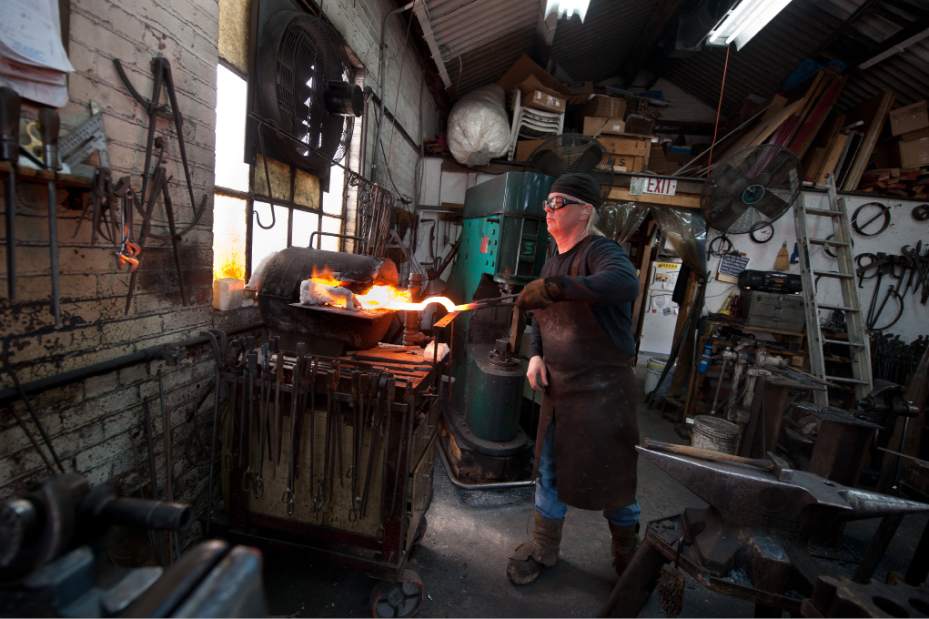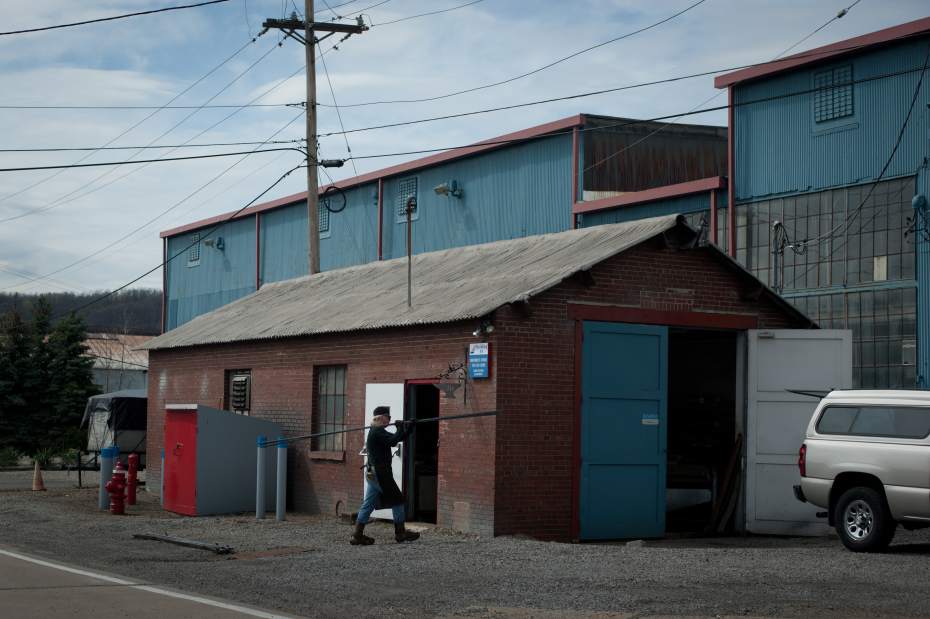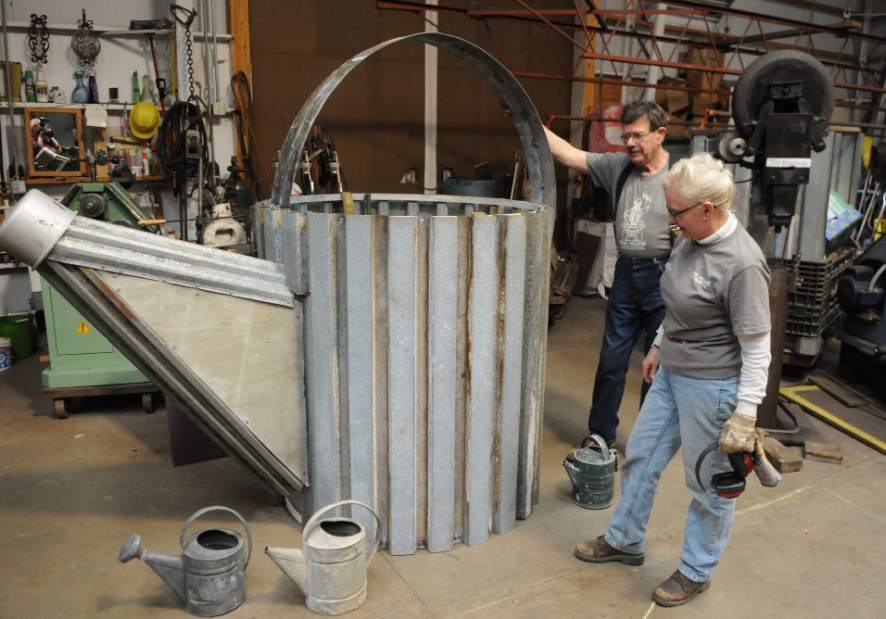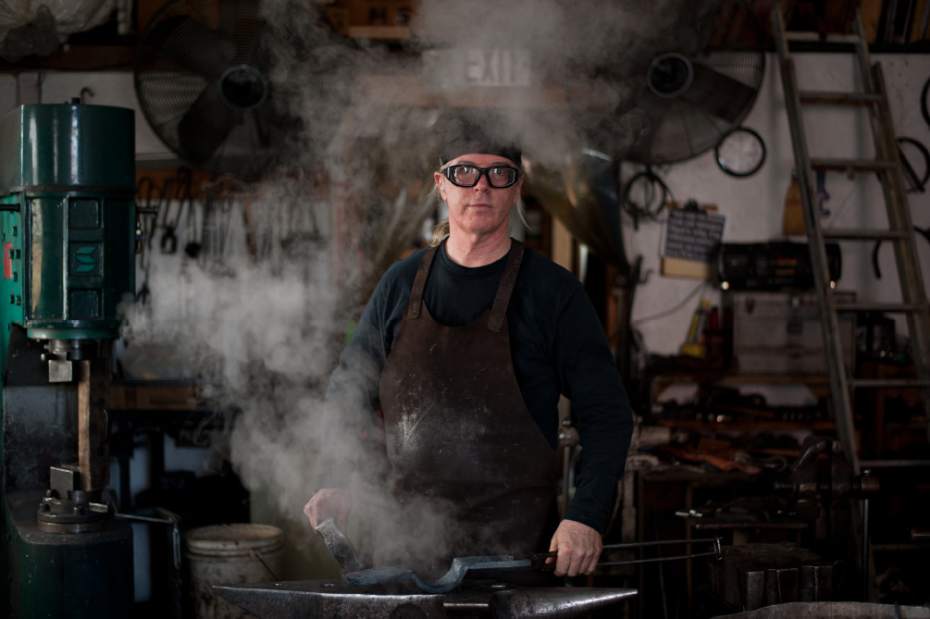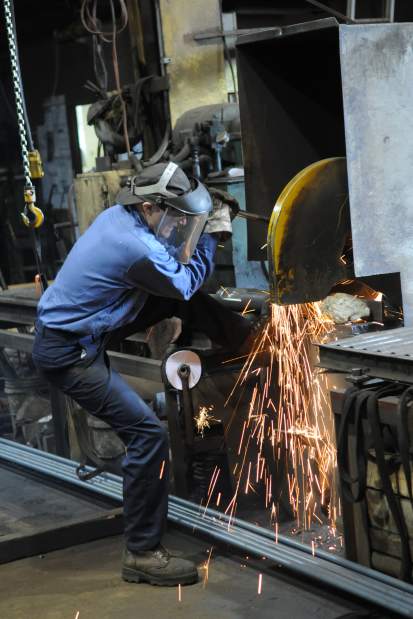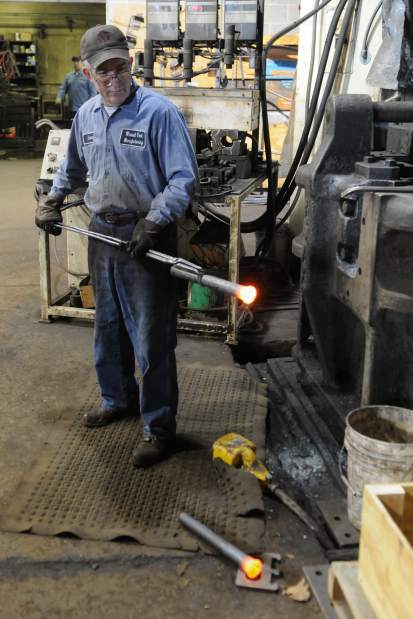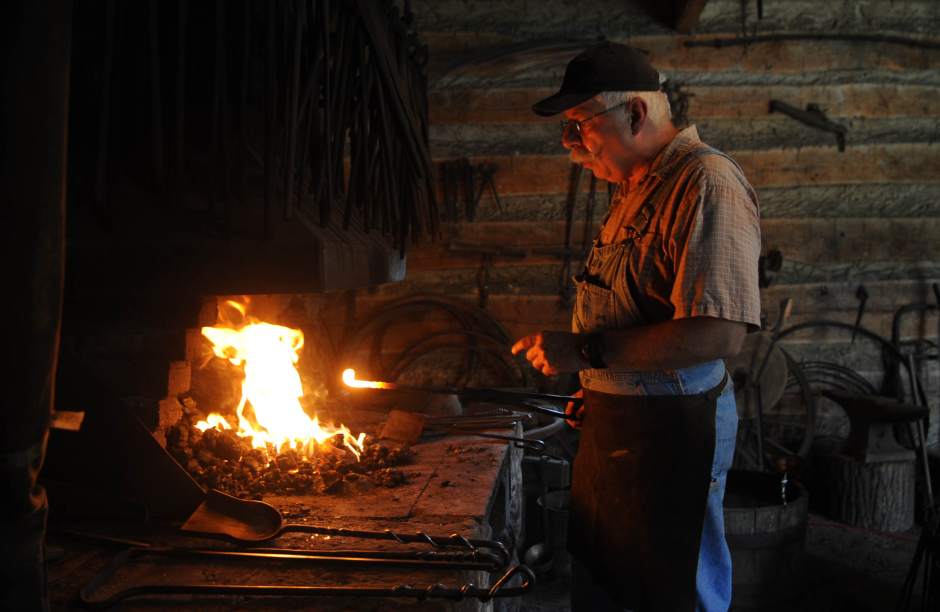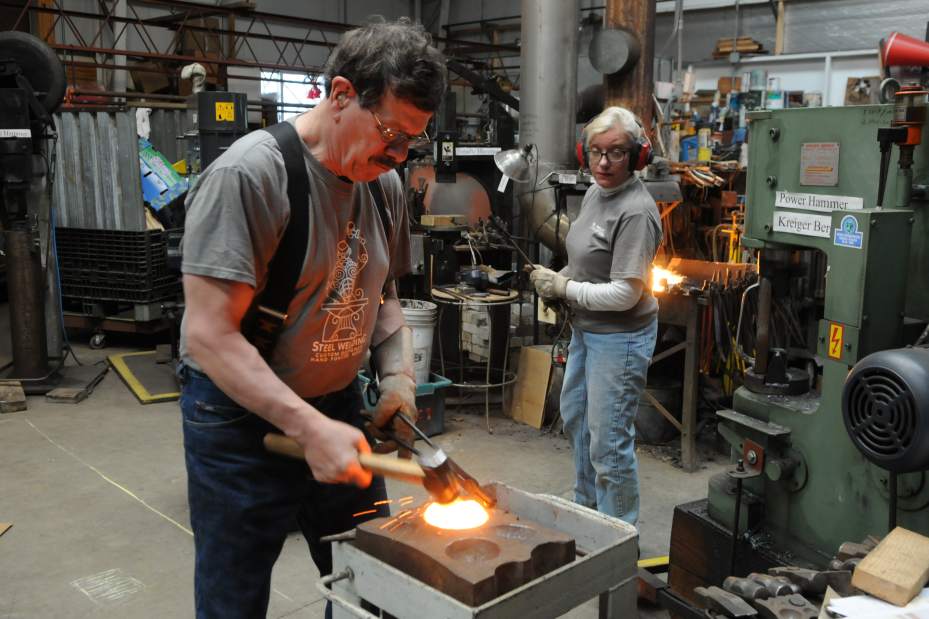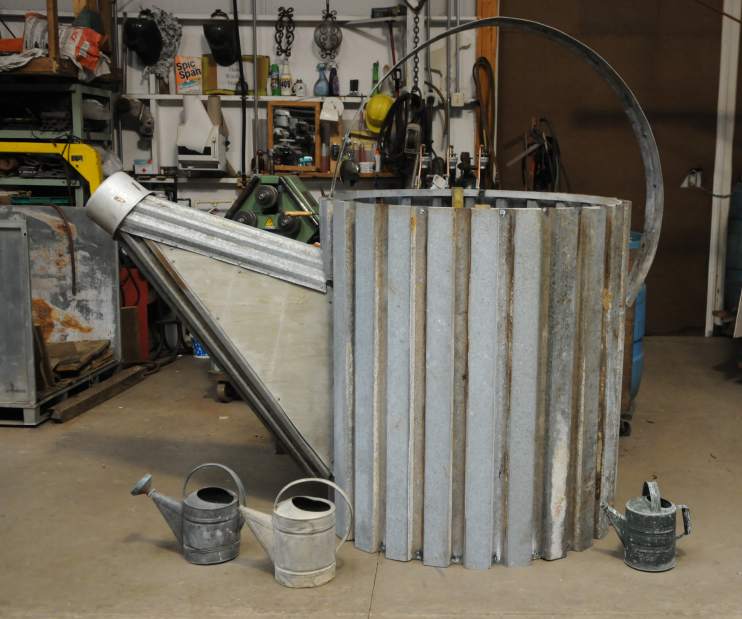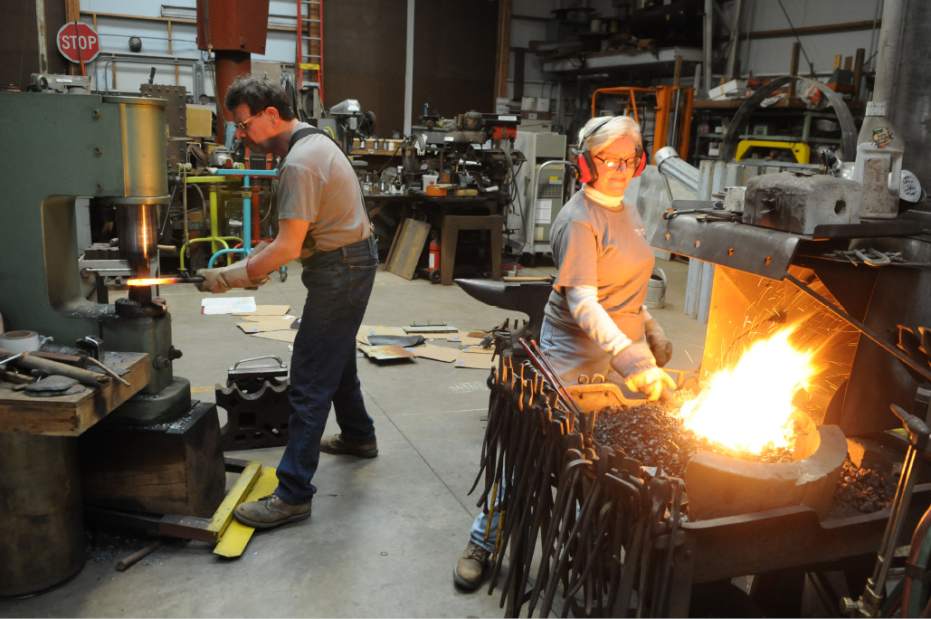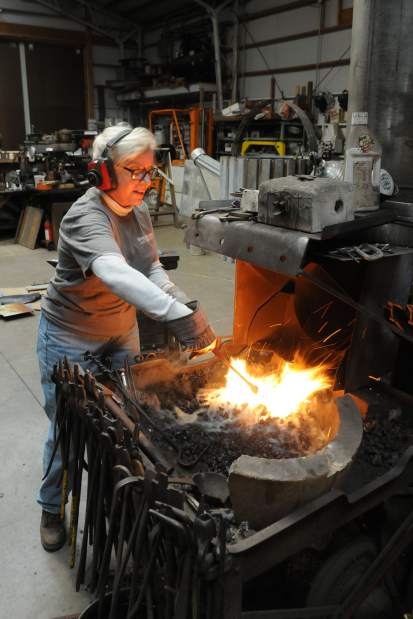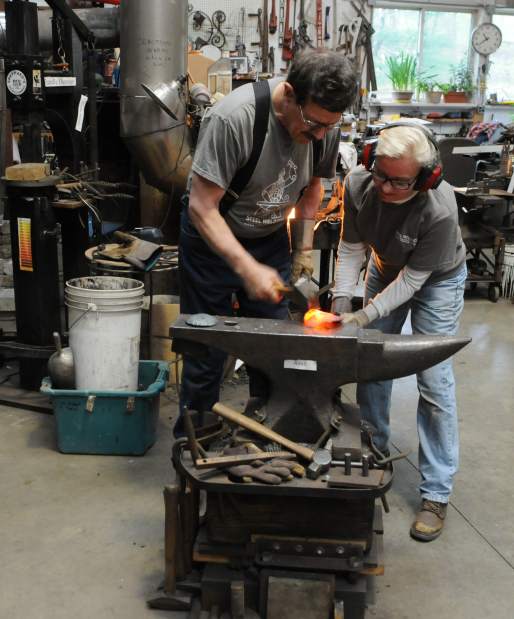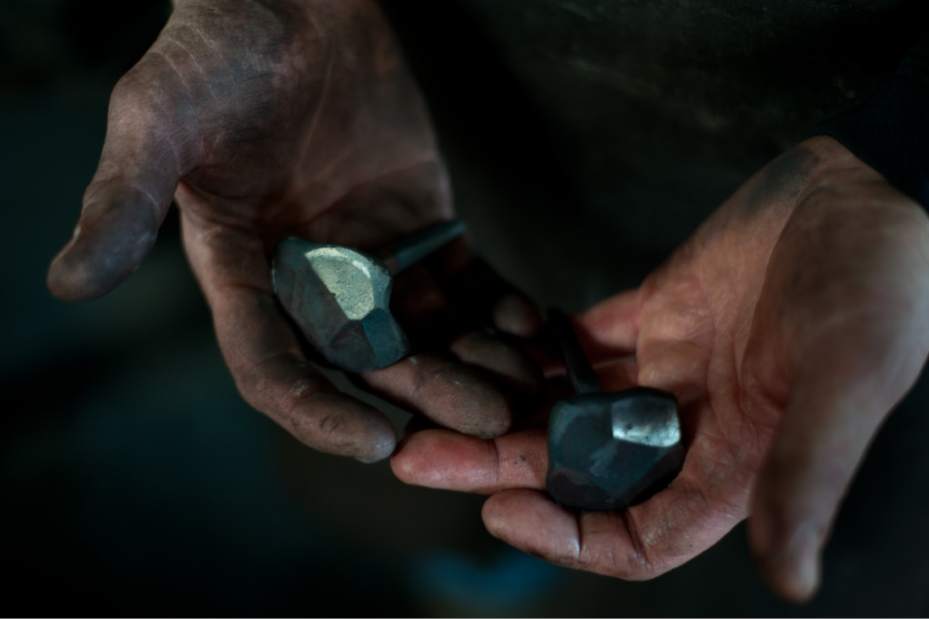These days, the work of blacksmiths ranging from artistic to utilitarian
Blacksmithing in the 21st century remains close to what it was when it was mentioned in the Book of Genesis.
“It is hammer, an anvil and fire,” says blacksmith and fabricator John Steel of New Sewickley, Beaver County.
But the job and results are far from the work of the village smithy.
Steel's work focuses on art, such as a wall hanging now under design that will be iron pages of a book depicting the owners' lives and interests. He also recently completed a copper baptismal font for Greensburg's Blessed Sacrament Cathedral.
James A. (Jymm) Hoffman creates historically accurate Colonial pieces from the carriages of cannons to items as simple as nails and tent stakes. He will appear at Fort Ligonier's Colonial Culture, Customs and Craftsmen celebration May 5.
Larry Wessel makes wrenches, railroad uncoupling devices, heavy jackhammer bits and asphalt cutters at his Wessel Tool & Mfg. in the city neighborhood of Esplen.
Red Star Ironworks started in Oakland in 1999, moved to Millvale in 2006 and now has operations in West Virginia and Mexico, doing what founder Peter Lambert calls “architectural-design metalwork.”
Notice no one is doing horseshoes. In the 19th century, farriers began to specialize in horse work, leaving other iron jobs to blacksmiths. Blacksmithing has changed from when the smith not only made shoes, but also pots and pans, hinges for doors and gates for property.
But interest in it has not. The Touchstone Center for the Arts in Farmington, Fayette County, gets 80 to 100 students for twice-yearly series of classes teaching smithing from the basics to high-level, ornamental work, says Adam Kenney, the site's director.
“The process is really compelling,” he says of shaping iron with heat. “There is a great, physical element to it, and the return is pretty immediate.”
There also are 275 members in the Pittsburgh Area Artists-Blacksmiths Association, which Steel formalized in 1988. It covers smiths in the tri-state area.
Modern blacksmithing sometimes resembles the classic work of the village smithy, but can be greatly different, too. Red Star's Lambert, for instance, says “blacksmithing is just part of what I do with metal.”
Wessel's industrial work comes close to the practical jobs handled in the old shops. Asphalt cutters, for instance, start as a 4-inch cylinder of steel before a flattened nose is pounded out.
Sometimes old-style work needs equipment the same age. Wessel uses a 1900-era Hossfield Bender to put the curve in railroad uncoupling hooks.
“Why would you put stress on your back when you have machines?” he says with a grin.
Modern technology has little place in this craft that some historians date to before 450 B.C. Such tools as the Hossfield Bender and a lathe from 1938 in Wessel's shop are more common than his digital read-out that gives precise measurements for drilling or an induction heater that can crank up to 1,850 degrees of heat in 47 seconds.
But those tools are more for his industrial-aimed tasks. Smaller jobs are centered on the area Steel compares to the “work triangle” in a kitchen. Instead of the stove-sink-prep area, this one is the anvil-fire-vise space where the blacksmith can move from one task to the other.
Steel's shop has that triangle, but it also is filled with equipment that can help him do finer work such as creating simulated record albums for the wall-hanging.
He is sure Hoffman, whom he considers an “excellent” blacksmith in the classical sense, would not even consider him one. Hoffman agrees, but says Steel is a much finer fabricator than he is, so Steel can tackle projects Hoffman would have to pass.
“I'm a lousy fabricator,” he says.
The focus of these craftsmen determines their clientele.
Steel, for instance, says he deals mostly with individuals who are searching for pieces of art or iron fencing for a property. He says he and business partner Chris Holt, a designer who also is a smith, then try to create something “site-specific.” Their products range from $250 to $30,000 or more.
Holt is a retired art teacher from Shadyside Academy in Fox Chapel and does most of the design work for the firm. But she has learned to work at the forge, too.
Steel and Holt also do some commercial work such as the baptismal font or a fireplace door at the Porch restaurant in Oakland that is meant to look like a blast-furnace door from a mill. The door won a gold-prize award from the National Ornamental and Miscellaneous Metals Association, a Georgia-based trade association.
Meanwhile, Hoffman's clients are places such as Fort Ligonier, which he calls his biggest single client in the past 10 years. He also has done work at Fort Pitt and now is working on a gun carriage for Fort Meigs near Toledo, Ohio.
Hoffman got involved in metalworking in shop classes in high school in Ohio and went to what is now Salem University in West Virginia for a degree in heritage arts, a program that would let him shape his forge work, he says. The field of study was changed into a more-academic-sounding museum studies, but it all helped him meld history and blacksmithing work. He spent two years working at Old Fort Niagara north of Buffalo as interpretive program manager and opened his Ambridge forge in 1999.
John Steel came into smithing and forge work after more than 25 years as a union iron worker, first at a mill in Monaca and then as a member of Local 3 of the International Association of Bridge, Structural, Ornamental and Reinforcing Iron Workers. He heard about the work of the Artist Blacksmiths Association of North America and took his work that direction in 1986, also forming his own artist-blacksmiths' group.
He says he was one of the first members of his family to leave farming near Freedom, where they settled before 1830.
Blacksmithing and forge work run a direct line through the Wessel family. Larry Wessel's grandfather, Albert, came from Germany and opened a forge first on a barge in the Allegheny River and then next to it on the ground near where the David L. Lawrence Convention Center is.
He then moved the shop to the Perrysville area of Ross. Larry's father, Elmer, opened the current forge work in 1962 in the South Side, and Larry moved it to Esplen in 1984-85.
From creating historical replicas to jackhammer bits, blacksmithing seems to offer its practitioners a career they find comfortable. Steel remembers his days in the Monaca mill.
“I said, ‘There must be something else in life other than welding coal bins,' ” he says.
Bob Karlovits is a staff writer for Trib Total Media. He can be reached at bkarlovits@tribweb.com or 412-320-7852.

